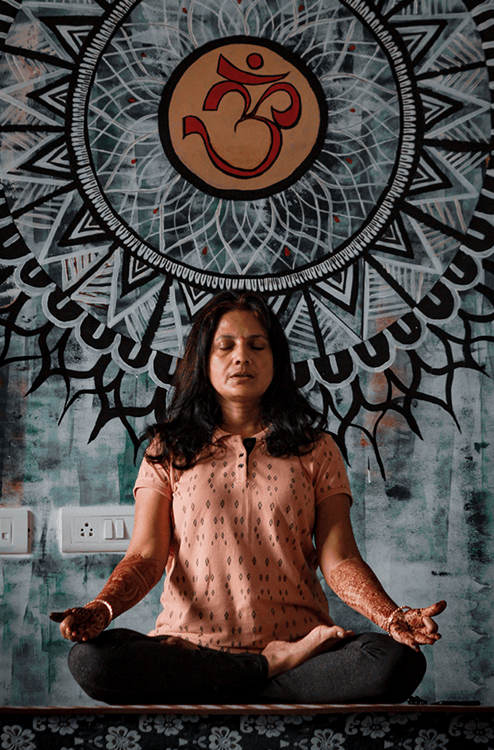3 Ayurvedic Doshas: How to Balance Vata, Pitta and Kapha for Optimal Health
- Maayi
- Apr 30, 2022
- 3 min read
Updated: Jul 14, 2023
In Ayurveda, there are three doshas that are said to govern all aspects of our health. These doshas are vata, pitta and kapha. Each of them have different characteristics and need to be balanced in order for us to achieve optimal health.
These Doshas are related to the elements of nature. There are five elements of nature. These five elements are:
Earth (Prithvi)
Air (Vayu)
Water (Jala)
Fire (Agni)
Space (Aakash)

Vata Kapha and Pitta have a strong relationship with the elements of nature. The relationship is defined as given below:
Vata Dosha is related to air and space.
Pitta Dosha is related to fire and water.
Kapha Dosha is related to earth and water.

What are doshas?
According to Ayurveda, universal life force manifests itself in the form of three doshas, Vata, Pitta and Kapha. Every human posses unique combination of these three doshas. They are the fundamental energies that govern all aspects of our health.
What are the significance of three doshas?
Our doshas are determined at the moment of our conception and is unique for every individual. These doshas are responsible for the way our mind and body functions. They govern all physiological and psychological processes in the body.
As we grow and move through life, the proportion of these doshas fluctuates according to the environment diet, season, climate, age and various other factors.
Doshas need to be balanced for optimal health, imbalance in doshas affect our health, energy level and general mood.
What are the three doshas?
The three doshas are
Vata
Pitta
Kapha

1. Vata Dosha
Vata means ‘vayu’, ‘air’, hence vata dosha is made up of the elements of air and space. It is responsible for all the movement in the body, both physical and mental. Vata governs our breath, circulation, heart rate and nervous system, qualities of lightness, cold, dryness, roughness of skin etc.

Innate nature of Vata dosha
Vata being made of elements of air and space has qualities like dry, cold, rough, light, clear, mobile, and subtle.
When Vata dosha is imbalanced?
When vata dosha is imbalanced, it can manifest as anxiety, fear, insomnia, constipation and dry skin.
How to balance Vata dosha?
To balance vata, one should focus on grounding and stability in their life. Eat warm, cooked foods. Avoid cold, raw foods and drinks. Exercise regularly but not too strenuously. Get enough sleep and rest.
2. Pitta Dosha
Pitta means ‘fire’, hence pitta dosha is made up of the elements of fire and water. It governs our digestion, metabolism and hormones.

Innate nature of Pitta Dosha
Pitta being formed of fire and water elements has qualities like hot, light, sharp, oily, liquid, and mobile.
When Pitta dosha is imbalanced?
When pitta is out of balance, we may experience symptoms such as heartburn, inflammation and skin rashes.
How to balance Pitta Dosha?
To keep pitta in balance, one should avoid overheating, both physically and emotionally. Eat cooling foods such as cucumbers and watermelons. Avoid spicy and fried foods. Exercise in moderation and get enough sleep.
3. Kapha Dosha
Kapha dosha is made up of the elements of earth and water. It governs our growth and structure, immunity and lubrication in the body.

Innate nature of Kapha dosha
Kapha being made of elements like earth and water has qualities like heavy, slow, smooth, oily, soft, stable, and cloudy.
When Kapha dosha is imbalanced?
When kapha is out of balance, we may experience symptoms such as congestion, colds, flu, weight gain and lethargy.
How to balance Kapha dosha?
To balance kapha, one should focus on lightening and drying foods and drinks. Eat more cooked than raw foods. Avoid dairy and sugar. Exercise regularly, especially in the morning. Get enough sleep but not too much.
Ayurvedic body type based on three doshas
Ayurveda has defined three types of bodies based on the qualitative nature of the Doshas. Each Ayurveda body has a predominant dosha that defines the trait of that particular body.
Three body type are: Vatta body, Pitta body, Kapha body.

1. Vatta Body
A vatta body type refers to people who have a predominance of Vata dosha in their body. They inhabit characteristics and qualities predominant to vata dosha. Such individuals are usually slim, energetic and creative. They tend to have cold hands and feet. Vatta types are prone to anxiety and insomnia.
Qualities of Vata body type:
Positive qualities
Quick learner
Creative
Can multitask
Compassionate
Flexible
Slim
Negative qualities
Mood swings
Prone to anxiety
Sensitive to cold
Digestive problems
Poor circulation
Sleep issue
2. Pitta Body
Pitta body type have predominance of pitta dosha in their body. They are well-built individuals with good leadership abilities.
Qualities of Pitta body type:
Positive qualities
Intelligent
Quick learner
Goal-oriented
Good leadership skills
High metabolism
Negative qualities
Impatient
Gets into conflict with others easily
Gets hunger pangs and subject to mood swings
Sensitive to hot weather
Common health problem faced is inflammation
3. Kapha Body
The Kapha body types have a predominance of Kapha dosha. These people are more grounded and stable. They are described perfectly by the phrase ‘slow and steady’.
Qualities of Kapha body type:
Positive qualities
Caring and empathetic
Trusts others easily
Calm, composed, and patient in nature
Wise and mature
Have strong bones and joints
Have strong immunity
Negative qualities
Slow metabolism
Gain weight faster
Sluggish and oversleeping nature
Prone to respiratory problems
Risk of Heart disease



Comments